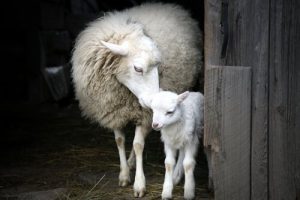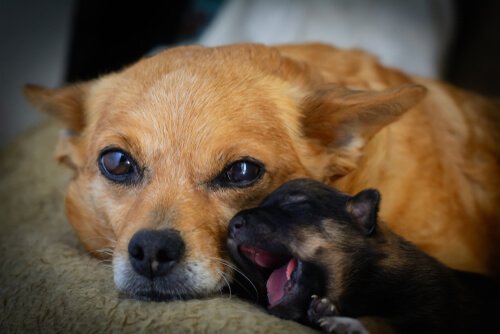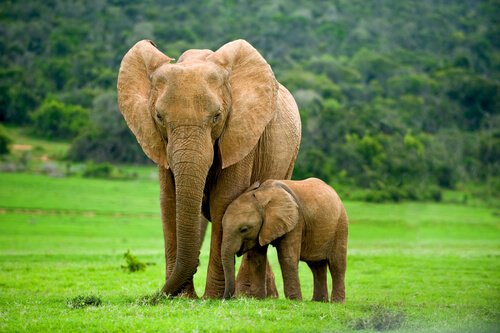The Impressive Maternal Instinct of Animals

If you thought that humans were the only ones that have a maternal instinct, you’re wrong. Different species show that their maternal instincts are equal to, or even stronger than those of humans. There are some people who claim that animals don’t have any feelings…
Where does the maternal instinct of animals come from?
There is a saying that nature is wise. This is demonstrated more and more as we become more familiar with the animal world. Just like humans, animals also have an innate maternal instinct. It’s kind of like a chip inside our brains that impels us to protect and care for the most defenseless.
Jenny Holland, a collaborator for National Geographic and a specialist in biology and animal conservation, confirms the way that animals’ brains work. They seem to be programmed to take care of others, not only to do a good deed, but also to preserve the species.
The interesting thing is that this maternal instinct is even seen between species. Many animals are willing to adopt other defenseless animals, even if they don’t share likes or have any similarities. Do you remember The Jungle Book? Well, it wasn’t a story based on fantasy or fiction. Nature actually works that way.

For example, it’s been discovered that whales are creatures that will care for other animals that are in need. Dolphins have been found mixed into their groups, as well as other animals that have been rescued from fishing nets, that have been injured or have been separated from their parents.
These adoptions in the animal kingdom seem to happen during this stage of lactation when the animal’s oxytocin levels increase and these bonds seem to be easier.
This also happens among chimpanzees, lions, elephants and many other animals. Seeing examples of this over and over again reminds us that animals still have so many lessons to teach us that make us better people. Don’t you think?
Exceptional cases of maternal instincts in animals
Elephants have a remarkable maternal instinct. The females and children usually travel together in herds. They walk in a circle with the youngest member on the inside in order to care for them and protect them. Of course, each elephant has its own mother. However, if one of them becomes an orphan, the rest of the herd will adopt him. They won’t leave the young animal alone or helpless until they reach adulthood.
Even though elephants are docile and noble, they become fearsome beasts if someone threatens their young. This is the same for sloths. Although a lot of people don’t know it, a sloth’s name only has to do with its movements, not its personality.

This animal actually isn’t lazy and they have small amounts of energy. Therefore, they have to be careful with how they use it because they need to save their energy for only things that are strictly necessary. For instance, they will need it to protect their young. In these moments, they can use all of their stored energy to protect the lives of the little ones. In just a few seconds, they could split any predators in half with their long claws.
Kangaroos also have a splendid maternal instinct. Not only do they protect their babies by carrying them in their pouches for months, but they can also kill anyone who tries to hurt them with just one kick.
Additionally, like the case of whales and elephants, if they find a helpless baby, they’ll put it in their pouch. They will continue to care for them until they can fend for themselves.
Polar bears, lions, tigers, and other species have similar maternal instincts. The saying “mothers turn into animals when defending their children” isn’t just a phrase, it’s reality.
All cited sources were thoroughly reviewed by our team to ensure their quality, reliability, currency, and validity. The bibliography of this article was considered reliable and of academic or scientific accuracy.
BERNARDO, J. (1996). Maternal Effects in Animal Ecology. American Zoologist. https://doi.org/10.1093/icb/36.2.83
Uller, T. (2010). Maternal Effects in Mammals. Animal Behaviour. https://doi.org/10.1016/j.anbehav.2010.03.020
Bolwig, N. (1959). A Study of the Behaviour of the Chacma Baboon , Papio ursinus. Behaviour.
This text is provided for informational purposes only and does not replace consultation with a professional. If in doubt, consult your specialist.